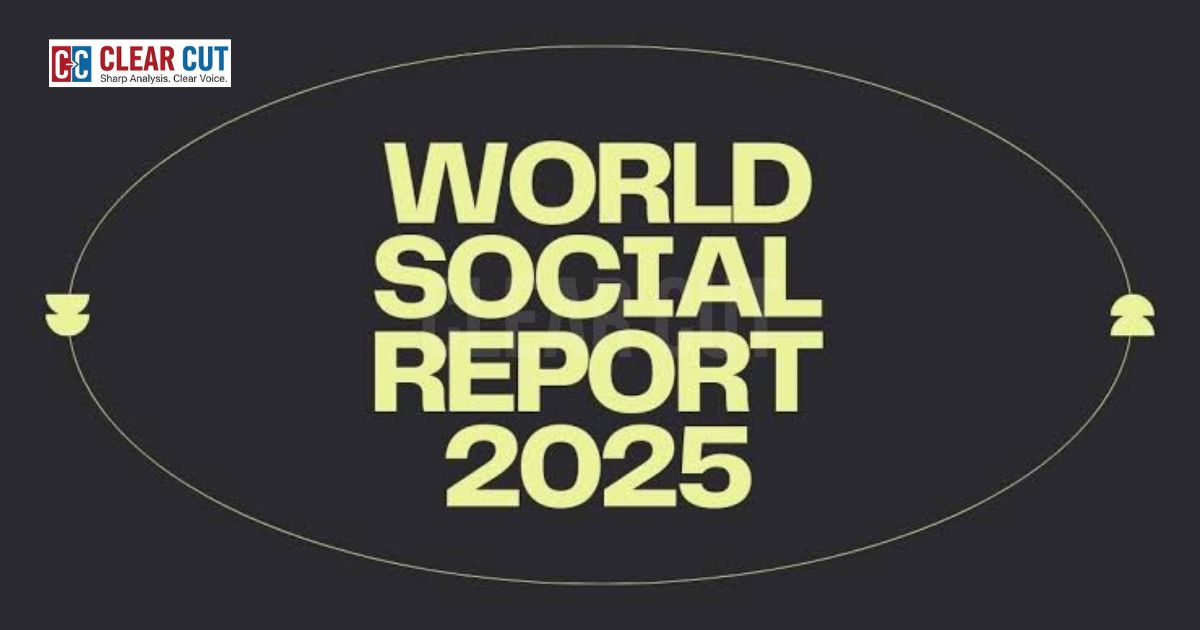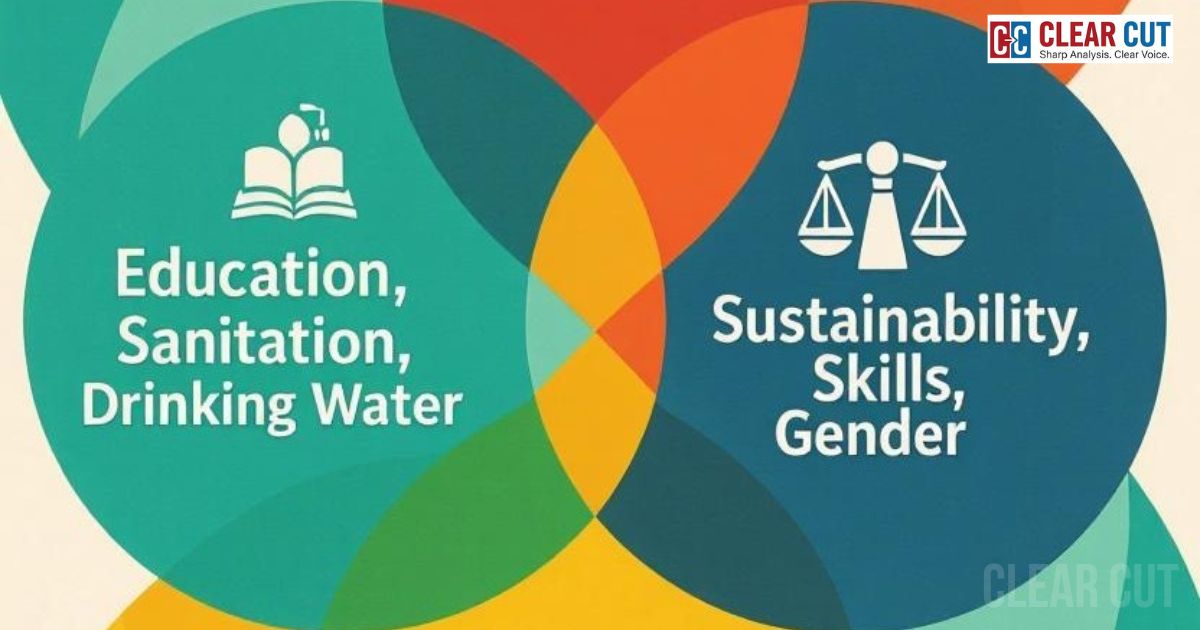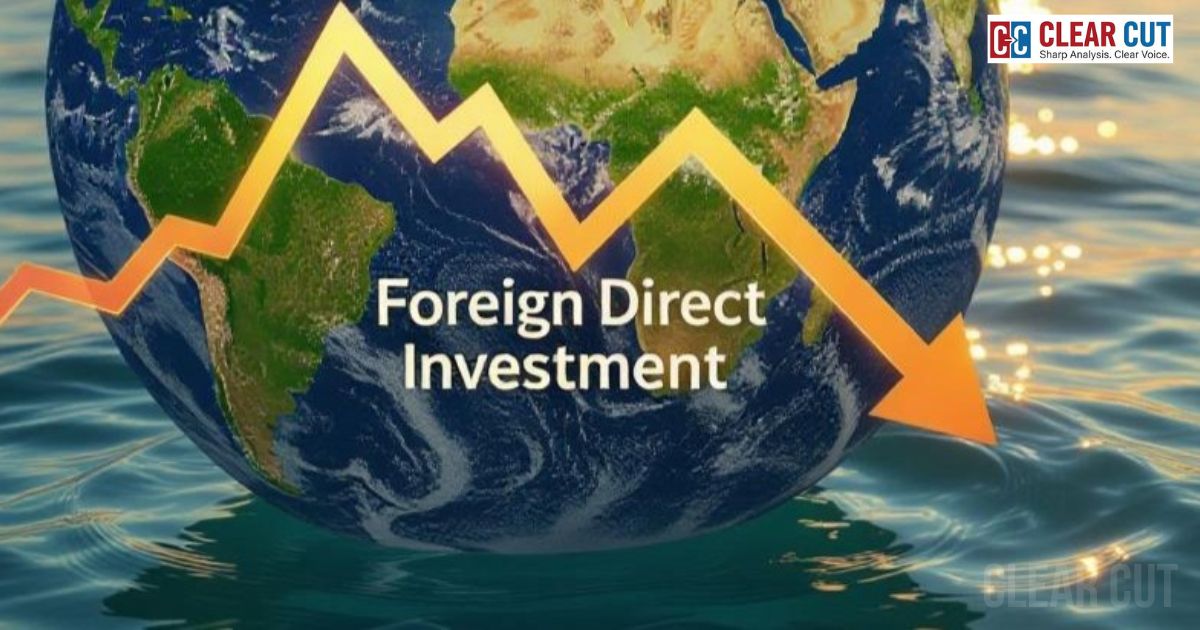Photo Credit: Adda247
Clear Cut Livelihood Desk
New Delhi, UPDATED: Sep 15, 2025 05:08 IST
Written By: Janmojaya Barik
India’s poverty story has often been told as one of progress. Over the last two decades, government welfare schemes, exponential economic growth, and financial inclusion have reduced the share of people living in extreme poverty, also defined internationally as living on less than $2.15 per day. But the UN World Social Report 2025 highlights a less visible challenge: millions of Indians who live just above this line, earning between $2.15 and $6.85 per day (roughly ₹180–₹570).
These families are not counted as extremely poor, yet they are counted as being in the “poverty risk zone.” Out of the total number worldwide, 2.8 billion individuals belong to this group. In India, some 400–450 million people, or about one-third of the population, are estimated to be in this risk category.
Understanding the scale of Vulnerability
This segment of India’s population is economically active and contributing but vulnerable. They can possibly purchase food, shelter, and elementary education, but their long-term survival remains questionable. A rise in the price of essentials, a health crisis, or loss of daily wages can immediately plunge them below the poverty line.
The poverty risk segment primarily includes:
• Small-scale marginal farmers who live on rain-fed agriculture and unstable crop prices.
• Informal workers, who comprise more than 80% of India’s employees.
• Urban migrants who frequently get engaged in construction, transport, and low-paying services.
Why Vulnerability Continues?
1) Predominance of Informal Employment:
India’s informal economy hires most employees on a contract-less, pension-less, and health-insurance-less basis. Daily wage oscillation results in insecure income and little to no savings at all.
2) Climate and Environmental Hazards:
India is one of the most climate-exposed nations. Heatwaves, floods, and droughts cut down farm production and annihilate household property and villagers in a compromising position.
3) Healthcare Expenditure:
The National Health Accounts show that out-of-pocket expenditure accounts for almost 48% of India’s overall health spending. For poor families, even small hospital bills suffice to drain savings.
4) Persistent Inequality:
Though India’s economy has grown, the growth of incomes has not been uniformly shared. Rural families, female laborers, and lower castes continue to overrepresent the poverty risk pool.
5) Inflation in Staples:
Food, cooking fuel, and housing price unexpected increases burdens the lower income families. In the absence of indexed wages or subsidies, which are not normally given to such goods, households continue to face inflation shocks.
Why so many Implications ?
The presence of so many “close to poverty” individuals has widespread social and economic implications:
1) SDG Risk: It erodes efforts toward Sustainable Development Goal 1 (No Poverty) and Goal 10 (Reduced Inequalities).
2) Social Instability: Economic insecurity on this scale corrodes institutional trust and increases grievance.
3) Growth Constraints: One-third of the population with reduced purchasing power limits domestic consumption-based growth potential.
4) Pressures on Migration: Rural vulnerability motivates migration to urban areas, which tends to exacerbate urban poverty and informal settlements.
The need to strengthen
The World Social Report 2025 and India’s own experience of development suggest a range of strategies:
1. Expanding Social Protection
Strengthening programs like MGNREGA, PM-Kisan, and universal health insurance can bring financial security and resilience against shocks.
2. Formalizing Employment
Covering provident funds, insurance, and pensions for informal workers can minimize insecurity and enable households to develop resilience.
3. Agricultural and Climate Adaptation
Crop insurance, irrigation investment, and climate-resilient agriculture practices are essential to safeguard rural incomes.
4. Skill Development and Different Means of Livelihood
Government initiatives such as Skill India and rural self-employment programs have to scale up to shift workers to more stable and better-paying jobs, which at least is enough for them to lead a comfortable life.
5. Private Sector and CSR Role
Corporate Social Responsibility (CSR) programs should be aligned with poverty eradication through healthcare, education, and microfinance for poor communities to empower them.
India’s success in reducing extreme poverty is notable, though the challenge of the risk zone of poverty continues to be pressing, or at least that’s what the report shows. With about 400–450 million individuals surviving on ₹180–₹570 per day, the nation is confronted with a development paradox: progress without resilience.
The UN World Social Report 2025 unequivocally states that poverty is not only about the very poor but also about those precariously near it. In the case of India, economic security for this segment has to be created to avoid poverty reduction being merely short-term and instead make it sustainable.
(With inputs from UN World Social Report 2025 )




